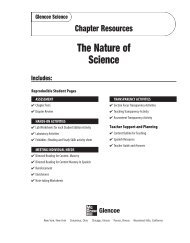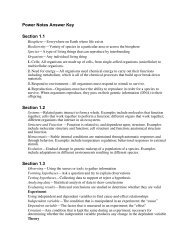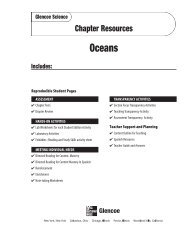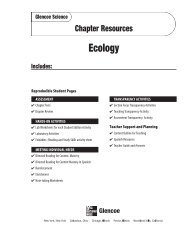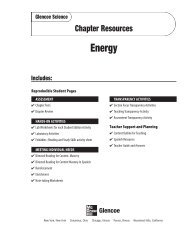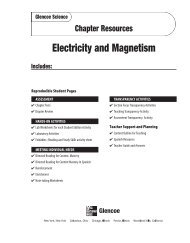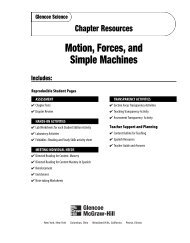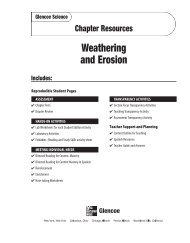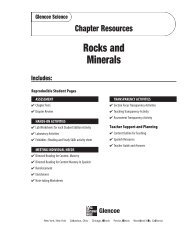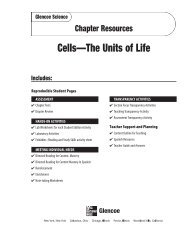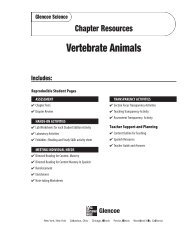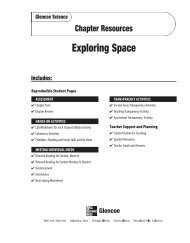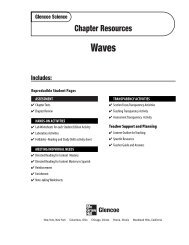Content Outline for Teaching - Potosi School District - Home
Content Outline for Teaching - Potosi School District - Home
Content Outline for Teaching - Potosi School District - Home
Create successful ePaper yourself
Turn your PDF publications into a flip-book with our unique Google optimized e-Paper software.
6<br />
<strong>Content</strong> <strong>Outline</strong><br />
<strong>for</strong> <strong>Teaching</strong><br />
Energy<br />
Underlined words and<br />
phrases are to be filled<br />
in by students on the<br />
Note-taking Worksheet.<br />
Section 3<br />
Chemical Energy<br />
A. Chemical reactions trans<strong>for</strong>m energy.<br />
1. Compounds are broken down or new compounds are <strong>for</strong>med in a chemical<br />
reaction.<br />
2. Energy in chemical bonds is a <strong>for</strong>m of potential energy called chemical energy.<br />
3. In every chemical reaction, energy trans<strong>for</strong>mations occur.<br />
B. To break chemical bonds, energy must be added; when chemical bonds <strong>for</strong>m,<br />
energy is released.<br />
1. Endothermic reactions—chemical reactions that absorb energy<br />
2. Exothermic reactions—chemical reactions that release energy<br />
3. Chemical reactions occur at different rates; a catalyst changes the rate of<br />
chemical reaction without its own structure being changed.<br />
Discussion Question<br />
How do endothermic and exothermic chemical reactions differ? endothermic—absorb<br />
energy; exothermic—release energy<br />
Energy 19




